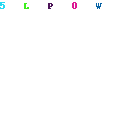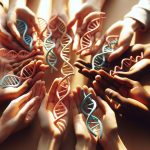Janine Adams, the brain behind Organize Your Family History, has carved a niche for herself with her blog focusing on efficiently sorting and documenting genealogical research. Through an enlightening interview, she shared insights into how the shift towards digital platforms has revolutionized the field of genealogy. The crux of her message highlighted the advantages that lie in wait for those ready to embrace this digital transformation. According to Adams, navigating these changes not only makes your research work more streamlined but also significantly enhances accessibility to valuable historical data.
Please share your experience
My journey in genealogy began two decades ago, but initially, I struggled due to poor organization. This setback didn’t quench my passion; instead, it propelled me to tackle the challenge head-on in 2012. It was then that I launched Organize Your Family History, a blog aimed at assisting individuals bogged down by their disorganized research findings. My motivation wasn’t just self-serving; through this platform, I aspired to guide others navigating similar challenges.
I’ve always had a knack for organizing—the messier, the better! While many genealogists relish the thrill of discovery, they often find themselves at a loss when faced with the ensuing chaos of information. My blog serves as a beacon for those lost in this sea of data, providing strategies and insights on maintaining order amidst the chaos.
Blogging also added an element of accountability to my research endeavors. Having been an avid blogger since 2006, discussing topics from tidying up spaces to unraveling family histories came naturally to me. The process not only honed my focus but also cultivated a community of like-minded enthusiasts who often engage with my content and share their journeys.
The digital revolution has significantly influenced my work flow over time. Transitioning from paper-based methods to digital archiving streamlined my tasks and amplified efficiency—translating documents into electronic formats while preserving original paper artifacts that bear sentimental value.
Genealogy today stands at an exciting juncture unlike any before; technological advancements have simplified access to vast repositories of information previously locked away in physical archives. What once required extensive legwork can now be accomplished with clicks, bringing newfound ease and possibilities into our pursuit of understanding lineages.
In essence, embracing both historical records and modern technology paves the way for enriched explorations into our pasts—a pursuit deeply rooted in curiosity yet elevated by structure and innovation.
Do you employ software to examine your results?
In my genealogy journey, I’ve leaned heavily on Reunion, a specialized software for Mac that serves as the backbone of my family tree research. The core principle guiding my work is straightforward: no fact makes it into my database without a proper source citation backing it. This rule has led me to revisit and scrutinize over 1,200 citations in my collection, ensuring the accuracy and reliability of each piece of information recorded.
Initially, my focus was too narrow, centered solely on direct ancestors while overlooking their siblings and cousins. Recognizing this oversight, I’ve since broadened my scope to include these collateral relatives, understanding now how vital they are to painting a full family portrait.
Despite not venturing beyond Reunion for other tools or platforms—partly due to comfort and partly due to ignorance about alternatives—I maintain there’s no one-size-fits-all method when organizing data. What matters most is finding a system that fits seamlessly into your workflow.
Subscriptions to both Ancestry and FamilySearch have been invaluable resources in gathering historical documents and records. Although initially hesitant about FamilySearch’s utility as a primary source, its worth became evident over time. Diving into both platforms often proves fruitful—they offer varying scans and indexes for similar records which can shine new light on elusive ancestral details.
The lesson here? Cast your net wide but keep your organization tight; utilize multiple sources but streamline them through a friendly software interface; finally, always ensure every fact has its roots firmly planted in credible evidence.
Advice for individuals conducting genealogy research

Embarking on the journey of genealogy, especially for beginners, can often become an overwhelming quest for perfection. The key takeaway is that striving for impeccability in tracing one’s ancestry is a futile endeavor. Instead, stepping into this exploration with the understanding that ‘good enough’ suffices will not only initiate the process but also sustain it.
Choosing a genealogy software that resonates with your needs marks the starting point. I kicked off my own adventure in ancestry mapping about eight years back by adopting this approach. Begin with charting out your immediate lineage and progressively work your way up the family tree.
It’s crucial not to overlook collateral relatives—the siblings of your direct ancestors. Incorporating them into your records might seem monotonous but proves invaluable in painting a comprehensive picture of your family history.
In dealing with source citations, a significant aspect of documentation in genealogy, perfectionism can be an impediment. Many fear inaccuracies in citing sources which may deter them from doing so altogether. My tactic involves utilizing templates provided by my chosen software to swiftly generate citations as needed; a practice that has served me well over time.
Through my podcast Getting Good Enough, aimed at shedding the constraints of perfectionism—of which one episode specifically tackles genealogy—we advocate for embracing imperfection through practical approaches like mine.
While professional standards exist, especially concerning source citations within the realm of professional genealogists, ensuring traceability suffices for personal research purposes. If you or anyone you’re sharing insights with can relocate documents based on provided citations, consider it mission accomplished.
Platforms such as Ancestry and FamilySearch are goldmines for sourcing documents essential to building out historical narratives; however caution prevails when considering public family trees offered by these sites due to their often dubious reliability and lackluster sourcing.
In essence, diving into genealogy doesn’t require waiting for perfect conditions or flawless execution—a sentiment echoed through both my talk titled « The Imperfect Genealogist » and relevant discussions within our podcast series. It’s about taking those first imperfect steps towards uncovering and documenting our pasts, empowered by tools and resources available at our fingertips today.
Why do you refuse to use those as a resource?
When exploring someone’s genealogy, particularly if they’re kin, it’s wise to scrutinize the family tree and any supporting evidence meticulously. The aim is to verify the accuracy of the information before accepting it as truth. Merely encountering a « public tree » on platforms like Ancestry doesn’t suffice. What truly matters are the documents substantiating the details within these trees.
Similarly, FamilySearch presents its own set of challenges due to its communal nature; anyone can edit or modify entries based on their personal beliefs or findings. This poses a problem when discrepancies arise in research, especially concerning well-documented ancestors. The prospect of another user altering pivotal data based on unverified claims makes relying solely on FamilySearch’s communal tree somewhat unreliable.
Given these hurdles, it’s more practical and rewarding to direct efforts towards uncovering actual records rather than wading through potentially unverified edits. Prioritizing document retrieval over navigating communal databases ensures that one bases their genealogical research on solid ground – grounding that withstands scrutiny and enriches our understanding of lineage with factual certainty rather than hearsay.
How DNA Revolutionized Genealogy
Exploring the realm of DNA testing through services like Ancestry DNA has opened up unimaginable avenues for individuals keen on tracing their lineage and understanding their ethnicity. The journey from taking a test to fully grasping its implications is not instantaneous. It unfolds over time, often necessitating engagement in various educational forums or seminars to truly appreciate the depth of information available.
The allure of discovering long-lost relatives or unknown aspects of one’s ethnic background is compelling. However, this exploration might also lead to unexpected revelations, akin to opening a « Pandora’s box. » Such discoveries can be both exhilarating and daunting, presenting a mix of challenges and opportunities.
Despite these complexities, the field of genetic genealogy holds boundless potential. It leverages DNA science to forge connections across generations, answering longstanding questions about familial ties and heritage. This scientific frontier feels limitless; it’s hard to predict all the possibilities it may unveil or the myriad paths it could lead us down as we unravel our pasts and look toward our futures with anticipation and hope.




















